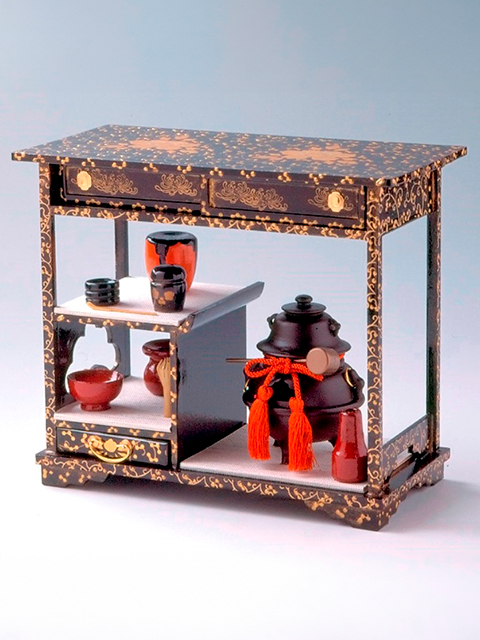SURUGA Hinagu (Doll Decorations)

Production of decorations for the Doll Festival (Hina Matsuri) in Suruga dates back to the 16th century when craftsmen from all over the country came to help with the construction of Kunosan Toshogu Shrine and Asama Shrine, introducing many advanced craft techniques to the area. Benefitting from this influence as well as the warm and humid climate, a lacquerware industry emerged during the Edo era (1600-1868).
Being advantageously located halfway between Edo (Tokyo) and Kyoto further advanced the growth of the craft. Because each step is assigned to different artisans, including wood turners, lacquerers and maki-e painters, it is possible to produce a great number of handcrafted items.
Much of the decorative work consists of arabesque leaf patterns and glowing nature images created using maki-e gold and silver sprinkled lacquer. Each piece is accurate down to the finest detail. For example, a sewing box small enough to fit in the palm of a hand has tiny drawers that open and close.
Feature
Arabesque patterns, images of flowers and birds, mountains and water landscapes, and other lacquer decorations adorn the Suruga doll furniture which is used as decorations for the Doll Festival. Even the finest details are reproduced in miniature, using such techniques as joinery and lathe work. For example, sewing boxes that can fit in the palm of a hand have real working drawers.
How to make
Each step in the process is assigned to a different experienced artisan and comprises joinery and lathe work, lacquering, applying the maki-e gold or silver sprinkled lacquer decorations, affixing metal fittings, and finishing. The manufacturer manages each step, finishes the items, and makes them into commercial products.

